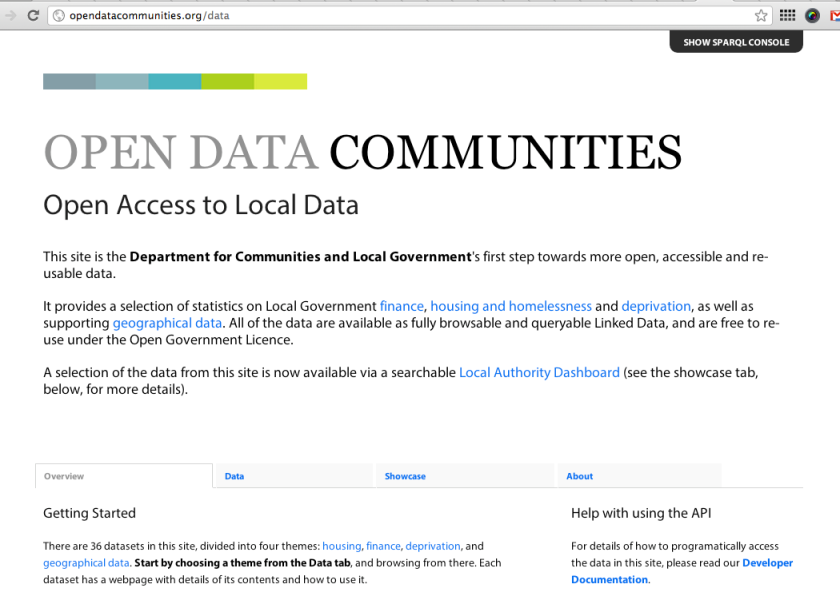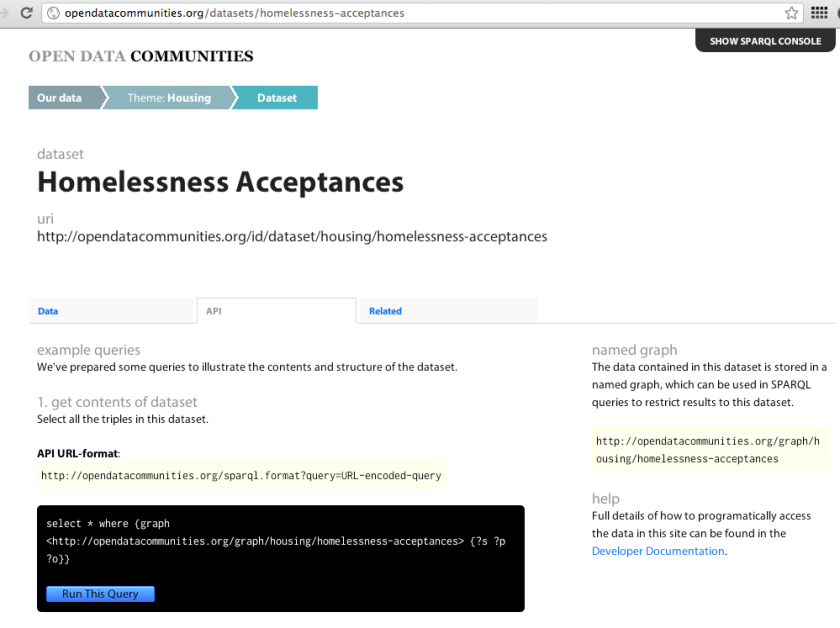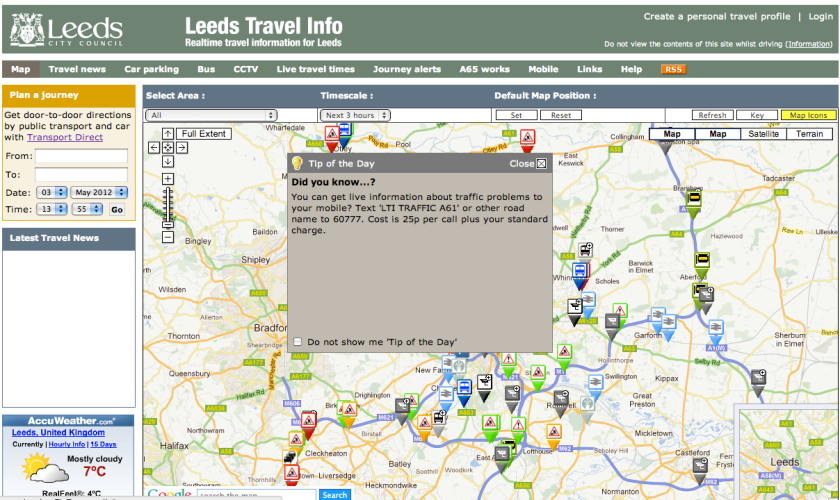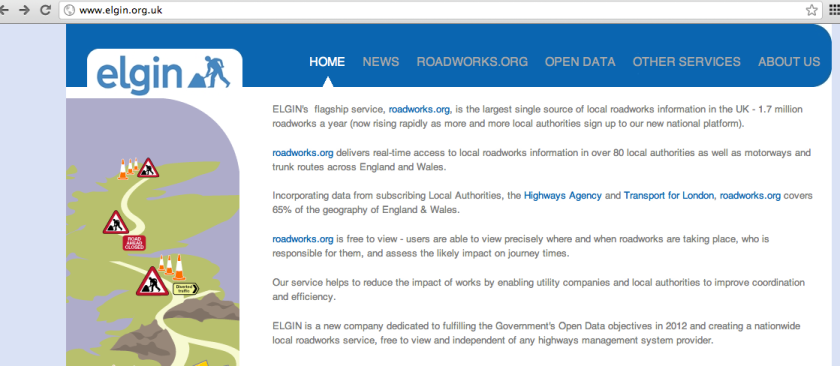I’m starting to feel as if I need to do myself a weekly round-up, or newsletter, on open data, if only to keep track of what’s happening and how it’s being represented. Today, for example, the Commons Public Accounts Committee published a report on Implementing the Transparency Agenda.
From a data wrangling point of view, it was interesting that the committee picked up on the following point in its Conclusions and recommendations (thanks for the direct link, Hadley:-), whilst also missing the point…:
2. The presentation of much government data is poor. The Cabinet Office recognises problems with the functionality and usability of its data.gov.uk portal. Government efforts to help users access data, as in crime maps and the schools performance website, have yielded better rates of access. But simply dumping data without appropriate interpretation can be of limited use and frustrating. Four out of five people who visit the Government website leave it immediately without accessing links to data. So there is a clear benefit to the public when government data is analysed and interpreted by third parties – whether that be, for example, by think-tanks, journalists, or those developing online products and smartphone applications. Indeed, the success of the transparency agenda depends on such broader use of public data. The Cabinet Office should ensure that:
– the publication of data is accessible and easily understood by all; and
– where government wants to encourage user choice, there are clear criteria to determine whether government itself should repackage information to promote public use, or whether this should be done by third parties.
A great example of how data not quite being published consistently can cause all sorts of grief when trying to aggregate it came to my attention yesterday via @lauriej:
It leads to a game where you can help make sense of not quite right column names used to describe open spending data… (I have to admit, I found the instructions a little hard to follow – a screenshot walked through example would have helped? It is, after all, largely a visual pattern matching exercise…)
From a spend mapping perspective, this is also relevant:
6. We are concerned that ‘commercial confidentiality’ may be used as an inappropriate reason for non-disclosure of data. If transparency is to be meaningful and comprehensive, private organisations providing public services under contract must make available all relevant public information. The Cabinet Office should set out policies and guidance for public bodies to build full information requirements into their contractual agreements, in a consistent way. Transparency on contract pricing which is often hidden behind commercial confidentiality clauses would help to drive down costs to the taxpayer.
And from a knowing “what the hell is going on?” perspective, there was also this:
7. Departments do not make it easy for users to understand the full range of information available to them. Public bodies have not generally provided full inventories of all of the information they hold, and which may be available for disclosure. The Cabinet Office should develop guidance for departments on information inventories, covering, for example, classes of information, formats, accuracy and availability; and it should mandate publication of the inventories, in an easily accessible way.
The publication of government department open data strategies may go some way to improving this. I’ve also been of a mind that more accessible ways of releasing data burden reporting requirements could help clarify what “working data” is available, in what form, and the ways in which it is routinely being generated and passed between bodies. Sorting out better pathways between FOI releases of data and the then regular release of such data as opendata is also something I keep wittering on about (eg FOI Signals on Useful Open Data? and The FOI Route to Real (Fake) Open Data via WhatDoTheyKnow).
From within the report, I also found a reiteration of this point notable:
This Committee has previously argued that it is vital that we and the public can access data from private companies who contract to provide public services. We must be able to follow the taxpayers’ pound wherever it is spent. The way contracts are presently written does not enable us to override rules about commercial confidentiality. Data on public contracts delivered by private contractors must be available for scrutiny by Parliament and the public. Examples we have previously highlighted include the lack of transparency of financial information relating to the Private Finance Initiative and welfare to work contractors.
…not least because data releases from companies is also being addressed on another front, midata, most notably via the recently announced BIS Midata 2012 review and consultation [consultation doc PDF]. For example, the consultation document suggests:
1.10 The Government is not seeking to require the release of data electronically at this stage, and instead is proposing to take a power to do so. The Secretary of State would then have to make an order to give effect to the power. An order making power, if utilised, would compel suppliers of services and goods to provide to their customers, upon request, historic transaction/ consumption data in a machine readable format. The requirement would only apply to businesses that already hold this information electronically about individual consumers.
1.11. Data would only have to be released electronically at the request of the consumer and would be restricted to an individual’s consumption and transaction data, since in our view this can be used to better understand consumers’ behaviour. It would not cover any proprietary analysis of the data, which has been done for its own purposes by the business receiving the request.
(More powers to the Minister then…?!) I wonder how this requirement would extend rights available under the Data Protection Act (and why couldn’t that act be extended? For example, Data Protection Principle 6 includes “a right of access to a copy of the information comprised in their personal data” – couldn’t that be extended to include transaction data, suitably defined? Though I note 1.20. There are a number of different enforcement bodies that might be involved in enforcing midata. Data protection is enforced by the Information Commissioner’s Office (ICO), whilst the Office of Fair Trading (OFT), Trading Standards and sector regulators currently enforce consumer protection law. and Question 17: Which body/bodies is/are best placed to perform the enforcement role for this right?) There are so many bits of law around relating to data that I don’t understand at all that I think I need to do myself an uncourse on them… (I also need to map out the various panels, committees and groups that have an open data interest… The latest, of course, is the Open Data User Group (ODUG), the minutes of whose first meeting were released some time ago now, although not in a directly web friendly format…)
The consultation goes on:
1.18. For midata to work well the data needs be made available to the consumer in electronic format as quickly as possible following a request (maybe immediately) and as inexpensively as possible. This will minimise friction and ensure that consumers are able to access meaningful data at the point it is most useful to them. This requirement will only cover data that is already held electronically at the time of the request so we expect that the time needed to respond to a consumer’s request will be short – in many cases instant
Does the Data Protection Act require the release of data in an electronic format, and ideally a structured electronic format (i.e. as something resembling a dataset? The recent Protection of Freedoms Act amended the FOI Act with language relating to the definition and release of datasets, so I wonder if this approach might extend elsewhere?
Coming at the transparency thing from another direction, I also note with interest (via the BBC) that MPs say all lobbyists should be on new register:
All lobbyists, including charities, think tanks and unions, should be subject to new lobbying regulation, a group of MPs have said. They criticised government plans to bring in a statutory register for third-party lobbyists, such as PR firms, only. They said the plan would “do nothing to improve transparency”. Instead, the MPs said, regulation should be brought in to cover all those who lobby professionally.
This is surely a blocking move? If we can’t have a complete register, we shouldn’t have any register. So best not to have one at all for a year or two.. or three… or four… Haven’t they heard of bootstrapping and minimum viability releases?! Or maybe I got the wrong idea from the lead I took from the start of the news report? I guess I need to read what the MPs actually said in the Political and Constitutional Reform – Second Report: Introducing a statutory register of lobbyists.
PS For a round-up of other recent reports on open data, see OpenData Reports Round Up (Links…).
PPS This is also new to me: new UK Data Service “starting on 1 October 2012, [to] integrate the Economic and Social Data Service (ESDS), the Census Programme, the Secure Data Service and other elements of the data service infrastructure currently provided by the ESRC, including the UK Data Archive.”



























